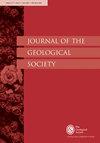咸味快照:海底通道中保存的基底侵蚀模式的极端变化
IF 3
3区 地球科学
Q2 GEOSCIENCES, MULTIDISCIPLINARY
引用次数: 0
摘要
活跃的海底河道基底有大型侵蚀地貌,如节理点和跌水潭。它们在古河道填土中的存在很少被记录下来,这意味着需要对它们在海底河道形态动力学中的重要性进行研究。我们利用埋藏在海底河道-填土中的水井校准的地震反射数据,记录了长 100 米、深 10 米的侵蚀地貌(在此解释为节理点和跌水潭),并首次提供了它们转移到地层记录中的机理过程。河道切入模式被解释为记录了原本不断下沉的沉积中心的瞬时抬升。河道斜坡的局部结构复杂,形成了优先冲刷区。转为沉积机制后,不规则的河道基底得以保存,从而抑制了它们向上游迁移,并使河道基底变得平滑。它们的形成和保存记录了盐构造的反应,为古代海底河道的形成过程提供了独特的缩影。这些特殊基底冲刷的存在表明,迎头侵蚀过程并不是快速进行的,这对 "节点迁移控制河道演变 "的范式提出了挑战。我们的研究结果表明,主航道表面的主要侵蚀过程以及航道的长期演变过程都是由更为渐进的过程所主导的。本文章由计算机程序翻译,如有差异,请以英文原文为准。
A salty snapshot: extreme variations in basal erosion patterns preserved in a submarine channel
Active submarine channel bases are marked by large erosional features, such as knickpoints and plunge pools. Their presence in ancient channel-fills has rarely been documented, meaning their importance in submarine channel morphodynamics requires investigation. Using seismic reflection data calibrated by wells from a buried submarine channel-fill, we document erosional features 100s m long and 10s m deep, here interpreted as knickpoints and a plunge pool, and provide a mechanistic process for their transfer into the stratigraphic record for the first time. Channel incision patterns are interpreted to record a transient uplift in an otherwise subsiding depocentre. Local structural complexities in the channel slope formed zones of preferential scouring. A switch to a depositional regime preserved the irregular channel base inhibiting their upstream migration and smoothing of the channel base. Their formation and preservation record responses to salt tectonics and provide a unique snapshot of the formative processes of an ancient submarine channel. The presence of these exceptional basal scours indicates that headward erosion processes did not operate rapidly, challenging the paradigm that knickpoint migration controls channel evolution. Our results show that the primary erosion of the main channel surface, and long-term channel evolution, are dominated by far more gradual processes.
求助全文
通过发布文献求助,成功后即可免费获取论文全文。
去求助
来源期刊

Journal of the Geological Society
地学-地球科学综合
CiteScore
6.00
自引率
3.70%
发文量
68
审稿时长
6-12 weeks
期刊介绍:
Journal of the Geological Society (JGS) is owned and published by the Geological Society of London.
JGS publishes topical, high-quality recent research across the full range of Earth Sciences. Papers are interdisciplinary in nature and emphasize the development of an understanding of fundamental geological processes. Broad interest articles that refer to regional studies, but which extend beyond their geographical context are also welcomed.
Each year JGS presents the ‘JGS Early Career Award'' for papers published in the journal, which rewards the writing of well-written, exciting papers from early career geologists.
The journal publishes research and invited review articles, discussion papers and thematic sets.
 求助内容:
求助内容: 应助结果提醒方式:
应助结果提醒方式:


